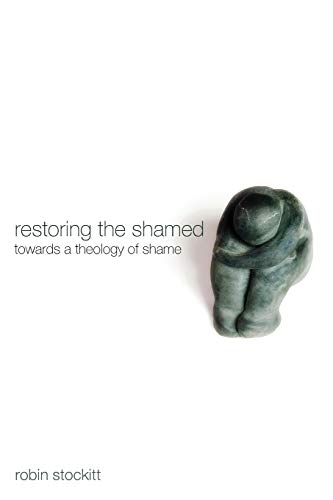Restoring the Shamed: Towards a Theology of Shame
Written by Robin Stockitt Reviewed By Andrew P. CampbellThis book by Robin Stockitt, an Anglican minister in Freiburg Germany, is the product of sustained theological reflection on the issue of “shame” in the context of the author's pastoral ministry. Stockitt's purpose is to “build a bridge across the chasm” between our current experience and the Gospel and, in doing so, to articulate a theology that fits in with and responds to everyday experience, not one that is grounded in abstract philosophy (p. 7).
The book is divided in two sections. The first section seeks to define shame in theological terms. Stockitt presents shame as something that holds us back from relationship with the Other through a feeling of inadequacy. His definition of the Other follows that of Paul Ricoeur, where the Other is defined in three forms. The first of these is the Other as ourselves, particularly our bodies. The second one is the Other who is the same as us, yet different. This is Stockitt's human Other. The third one is the “Wholly Other”, that is, the Other who is completely different from us, identified by Stockitt as God. What follows in chapters 3-7 is a theological analysis of how shame affects our relationships with each of these Others. Stockitt identifies the impact of shame on the self in society and on our relationship with God. He notes that shame makes us withdraw from both the human and divine Other and then examines how shame affects the self and our views of our selves. We are presented with a rich understanding of shame that prevents a true and meaningful relationship with God and society.
In section two Stockitt seeks to show how Christ's life and death solves this human problem. Guilt in the light of sin, as the primary human predicament, is replaced with shame. We are told that wrath, justice, and punishment are aimed at those who exclude and abuse the shamed and that these are attributes of God's love and concern for the shamed, rather than expressions of his intolerance of sin. In doing this, Stockitt seems to shift the human problem from sinful guilt before God to the human problem of shame. He then rejects a substitutionary reading of the work of Christ on the grounds that it is incompatible with God's grace and his love, which Stockitt claims is his “essential being”, with love pitted against the need to punish sin. Stockitt presents his alternative view, claiming that the work of Christ sought to transform positions of shame into positions of honour, empowering and honouring those who were shamed. Throughout his ministry, Christ put himself in a position of shame, of which the cross was the ultimate expression. He suffered the greatest possible shame, being excluded by both humanity and God. Stockitt calls for us to look on the face of God in Christ. On the cross we see the One who was shamed, while in the resurrection we see the One who brings honour. Stockitt writes, “The resurrected Christ, upon whom we are invited to gaze, offers us the prospect of our shame being removed and in its place the gift of honor and glory is bestowed” (p. 151). In closing, Stockitt offers pastoral resources for dealing with shame.
Restoring the Shamed is born out of a concern for practical pastoral issues and offers a cruciform theology that deals with shame, thus filling an important place in pastoral and atonement theology. Its greatest strength is, perhaps, the pastoral resources offered at the end of the book. Its major problem is not what it affirms, but rather what it denies, most notably substitutionary atonement, on the grounds that God could not be conflicted within himself with love, on the one hand, and the need to punish sin, on the other (p. 106). Stockitt does contend that God will punish those who refuse to embrace the excluded (p.96), which suggests that he does have a category of divine punishment in his theology. But this creates a problem, as we read that Christ's shameful death was both for the shamed and the “instigators of shame” (p. 140). Christ's death, which is an expression of his love, is aimed at both those whom Christ seeks to affirm and at those who should be punished. It appears, therefore, that Stockitt presents a concept of love and punishment that he rejects in substitutionary atonement.
Stockitt's work is to be commended for presenting a pastoral approach to a systematic theology of shame that adds a pastoral dimension to the mosaic of sin that is destroyed by Christ on the Cross. However, the theology of shame in Restoring the Shamed cannot and should not replace or eclipse an objective view of the atonement that deals with sin and our guilt before God.
Andrew P. Campbell
Andrew P. Campbell
St Patrick’s Church
Broughshane, Northern Ireland, UK
Other Articles in this Issue
Some of the most valuable and lasting contributions made to the Christian faith have come through Christian scholarship...
Music, singing and emotions: what are the connections? The question is by no means new, but it’s certainly one that has received renewed attention in recent times...
In his influential address, “Discourse on the Proper Distinction between Biblical and Dogmatic Theology, and the Right Determination of the Aims of Each,” Johann Philipp Gabler (1753–1826) lodged the programmatic proposal that scholars ought to distinguish between biblical and systematic theology...
One of the most unnerving things you can read is John Milton’s great poem Paradise Lost...
Since The Intolerance of Tolerance was published, readers have been sending me new examples they have spotted-examples of egregious intolerance masquerading in the name of tolerance...







